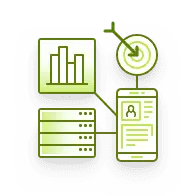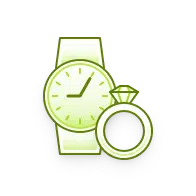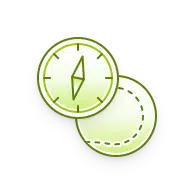Quick Guide: Measuring Trade Show ROI
June 2, 2017 By Stacey Woods

Trade shows are a tremendous opportunity for businesses to generate leads, meet new clients, and enhance relationships with existing accounts. But they don’t come cheap.
From designing and setting up your booth, renting floor space and exhibitors’ fees to travel and accommodation, handouts and giveaways, participating in a trade show is expensive – even if it’s a smaller one and especially if it’s held in another city.
Because of the heavy investment involved, you’ll want to have a good idea of whether a trade show is worth the time, effort and money – in other words, measure its return on investment (ROI).
Crunching the numbers
The simplest way to calculate immediate ROI is to divide the gross sales amount resulting from the trade show by the total cost of attending it. For example, let’s say you generate $200,000 in gross sales at a tradeshow and incur the following expenses:
| Category | Cost |
| Advertising including promotional materials, blogs, website updates, mailers, giveaways) | $5,000 |
| Airfare and transportation | $10,000 |
| Hotels and restaurants | $10,000 |
| Booth, renting floor space, exhibitor’s fees | $20,000 |
| Incidentals | $5,000 |
| TOTAL | $50,000 |
In the above scenario your immediate ROI is $200,000 ÷ $50,000 = 4. ROI is expressed as a ratio so it would be 1:4, which means that your company earned four dollars for every dollar invested. As a rule of thumb, as long as your sales exceed your total investment, then you have a positive ROI.
Of course, the sales cycle isn’t instantaneous, so your actual ROI could end up being higher. It takes weeks – even months – to see which leads will evolve into actual sales. Then you have the insight needed to decide if the ROI attained is high enough to justify attending the same event again.
Predict ROI for your next trade show
Whether you’re involved in a small partnership or a large enterprise, you can get a pretty clear idea of how much profit to expect from your next event, with the following techniques:
Define your marketing and sales goals
Before a trade show, set one or more clear and easy-to-measure goals that can be assessed later using a simple “yes” or “no” question. Examples of such goals would be creating 150 new sales leads; collecting 50 business cards from CMOs; or hard sales numbers.
If this if your first trade show, you should keep it simple; one goal for your team to achieve is probably enough. Other targets for lead generation and branding can be added for future shows, as you gain more experience.
Track and update event leads
Without tracking your leads after the trade show, it’s difficult to measure which ones will produce worthwhile ROI. The easiest and most efficient way to do this is by tagging your leads in your CRM system (with Pepperi, you do this by using the Mobile CRM module integrated in the trade show app). Scan business cards or badges and enter the event into each lead. You will then be able to pull cumulative statistics for any category.
Besides tracking, it’s important to update the leads over time to evaluate the revenue generated by each one – and by the tradeshow as a whole.
Determine Lifetime Customer Value
LCV indicates the long-term profit a new customer will generate, beyond the initial business closed at the trade show. Determine the life expectancy for your new customers in years, the revenue per each year, apply your gross profit margin to calculate lifetime gross profit, subtract customer acquisition cost, and voila!
Here’s a quick example:
| Life Expectancy | 3 years |
| Revenue Year 1 | $50,000 |
| Revenue Year 2 | $50,000 |
| Revenue Year 3 | $50,000 |
| Lifetime Revenue | $150,000 |
| Gross profit margin | %15 |
| Lifetime gross profit | $22,500 |
| Acquisition cost | $2,500 |
| Lifetime Net Profit | $20,000 |
Since your sales leads have already been tagged in your CRM software, calculating LCV for your trade show customers is straightforward. It may take several trade shows before you have a clear picture of the value of a new customer, and lifetime expectancy, but eventually you’ll be able to quickly and accurately predict LCV and ROI.
Measuring exact ROI from participating in a trade show is challenging. Nonetheless, it is critical in order to determine if the event is worth the investment and whether or not you should keep participating, year after year.























